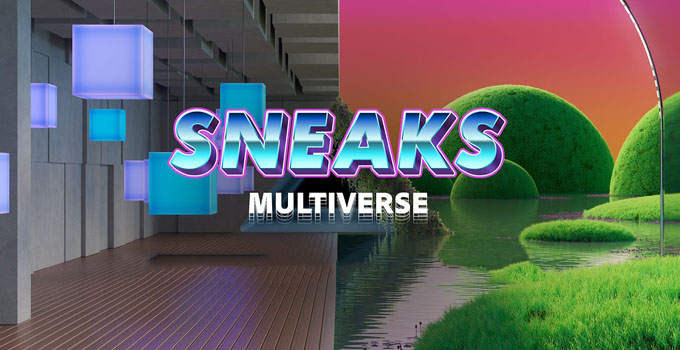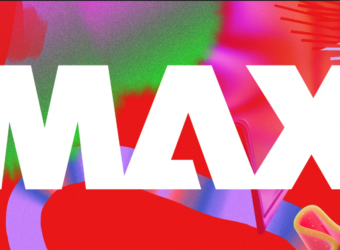Taking a Look at Adobe Max Sneaks for Video, Audio and 3D
During the highly anticipated 2023 Adobe MAX Sneaks presentation, Adobe astounded the audience with a remarkable array of experimental features that harnessed the incredible capabilities of generative AI. These innovative tools were designed to revolutionize the realms of video, audio, and 3D design, ushering in a new era of creative possibilities.

Before diving into the list of remarkable features showcased at the 2023 Adobe MAX Sneaks presentation, it’s worth highlighting not only Adobe Firefly, but also Project Stardust, an impressive innovation that has the potential to transform image editing. Adobe Firefly is already revolutionizing content creation across video, audio, animation, and motion graphics. It streamlines video editing, reducing post-production time and automating tasks. In audio, it enhances sound quality, simplifies dubbing, and caters to global audiences. In animation, it empowers creatives with lifelike movements and stunning effects, enhancing overall efficiency.
Meanwhile, Project Stardust simplifies the process of selecting, editing, and even deleting complex elements within any image, ushering in a new era of intuitive, accessible, and time-efficient image editing. For instance, this groundbreaking tool allows users to select individuals within a photograph, relocate them within the composition, and seamlessly fill in the background where they once stood. Users can also tweak elements like clothing color or positioning, treating static images as if they were files with layers.
Now, let’s delve into the impressive array of features demonstrated at this year’s Adobe MAX Sneaks presentation:
Project Fast Fill
One of the most groundbreaking unveilings was Project Fast Fill, which introduced the power of Firefly generative AI to the realm of video editing. For the first time, this tool allowed users to effortlessly remove objects or seamlessly alter background elements within video footage, matching the quality and fluidity of traditional still image editing. With Project Fast Fill, users could achieve feats like removing an unwanted person from a video clip or seamlessly transitioning a scene to a completely different location. The AI’s prowess automatically filled the void with realistic content that harmonized perfectly with the surrounding environment, opening up endless creative opportunities.
Project Dub Dub Dub
Project Dub Dub Dub was another game-changing feature that showcased Adobe’s prowess in AI automation. This tool streamlined the complex process of video dubbing by automatically translating a recording or audio track into all supported languages. Remarkably, it preserved the original speaker’s voice, ensured temporal alignment with the original dialogue, and readied the content for global publication. For video creators, this was a monumental time-saver, facilitating the process of translating content for a worldwide audience and making videos more accessible to non-English speakers.
Project Scene Change
Project Scene Change is a new technology that makes it easy to composite a subject and a scene from two separate videos — captured with different camera trajectories — into one scene with synchronized camera motion.
This is done by using artificial intelligence to render a 3D representation of the background scene from a prerecorded image as if it was captured by a free-moving camera. The separately filmed subject is then composited into this new scene with proper shadows, creating a realistic and seamless effect.
Project Scene Change has the potential to revolutionize the way video editors work, as it removes any limitations due to the camera motion of existing video assets. This means that editors can now place a subject into any environment they want, with realistic camera motion, without having to reshoot the footage.
Project Neo
Project Neo is a new technology that enables creators to embrace simplified 3D design within 2D tools and methods.
This is done by using a new, unified 3D and 2D design space that allows creators to work with 3D objects in the same way that they would work with 2D shapes and images.
Project Neo also includes a number of new features that make it easier to create and edit 3D objects, such as non-destructive modeling and real-time rendering.
Project Neo has the potential to make 3D design more accessible to a wider range of creators, and to open up new possibilities for creative expression.
Project ResUp
Project ResUp is a new technology that uses artificial intelligence to upscale low-resolution images and videos to high resolution without sacrificing quality.
This is done by using a deep learning model that has been trained on a massive dataset of high-resolution images and videos. The model is able to learn the patterns and relationships between pixels in high-resolution images, and then use this knowledge to upscale low-resolution images and videos in a way that preserves detail and quality.
Project ResUp has the potential to be a valuable tool for creators who need to upscale their legacy work for different platforms, such as social media, print, or large-screen displays. It can also be used to restore old or damaged images and videos.
Project Posable
Beyond the sphere of video, Adobe didn’t hold back on revealing innovative AI-powered tools for audio and 3D design. Project Poseable, a prime example, was a novel AI-based image generation model that facilitated the creation of realistic 3D images and videos of people, even in intricate or impossible poses that would challenge traditional cameras.
Project Draw and Delight
Meanwhile, Project Draw & Delight emerged as a comprehensive suite of generative AI tools that breathed life into raw ideas, often mere doodles or scribbles, by transforming them into refined illustrations. This could really come in handy for those who can’t draw, looking to create compelling storyboards.
Final Thoughts
These dazzling examples are just the tip of the iceberg. Adobe’s commitment to AI-driven innovation is poised to change the game again for the creative landscape. These tools have the potential to democratize creativity, making it accessible to individuals of all skill levels. In the grander scheme of things, as AI technology continues to advance, we can anticipate an influx of even more innovative and potent tools that will enable us to explore and express ourselves in novel and thrilling ways. The democratization of creativity, enhanced accessibility, and a more powerful creative toolkit await us, thanks to Adobe’s pioneering efforts in the AI realm.
But the question remains … is it too late to keep this genie in the bottle?
